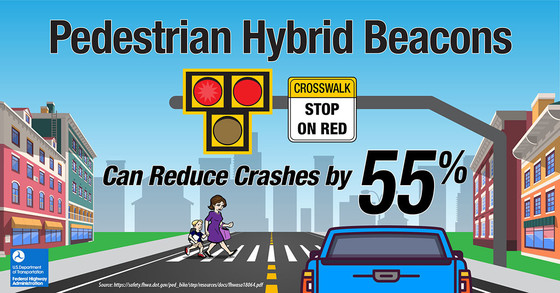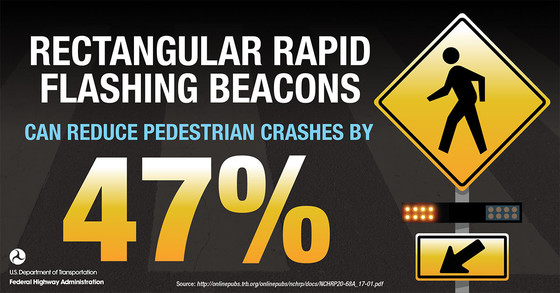Safe Transportation for Every Pedestrian
Over the last few weeks, we’ve discussed the Safe Transportation for Every Pedestrian (STEP) program’s spectacular seven countermeasures and several State and local agencies who have systemically or programmatically implemented them. When it comes to prioritizing pedestrian safety (and other multimodal) investments, a combination of resources is often used to identify locations for improvements and determine which countermeasures are best suited for a location.
The City of Milwaukee, Wisconsin, used an innovative approach to evaluate crash risk for their 2019 Pedestrian Plan. The approach evaluated pedestrian crash risk through a combination of crash typing, network analysis, and estimating pedestrian exposure. A study to categorize a sample of pedestrian crashes provided a basis for the approach. Then a Pedestrian High-Injury Network map was created where severe and fatal crashes were weighted higher than the non-severe. Next Pedestrian Exposure was added, where short-duration pedestrian counts were conducted, and the data extrapolated to estimate annual pedestrian crossings. The City then combined all the information to estimate pedestrian crash rate per million pedestrian crossings. With these approximate crash rates City staff are now equipped to target pedestrian safety countermeasure installations in areas with elevated pedestrian crash risk.
STEP offers additional resources for helping agencies make decisions about what to do once a location is determined. The Guide for Improving Pedestrian Safety at Uncontrolled Crossing Locations and the STEP Studio both detail the importance of engineering judgement to establish the need for a countermeasure such as Pedestrian Hybrid Beacon (PHB)/Rectangular Rapid-Flashing Beacon/or signals at crossings. STEP Studio also addresses frequently asked questions about crosswalks and other countermeasures such as, “Is there a MUTCD pedestrian volume warrant to mark a crosswalk?”

Other STEP resources such as webinars are available through the Pedestrian and Bicycle Information Center (PBIC) to help agencies make informed decisions on countermeasures. For example, a webinar on PHBs includes references to considerations for PHB installation in addition to guidance from the Manual on Uniform Traffic Control Devices (MUTCD).

If you have questions on identifying locations for pedestrian safety improvements or how to select the best countermeasures once you identify them, please contact Becky Crowe with FHWA’s Office of Safety or Peter Eun with the FHWA Resource Center.

